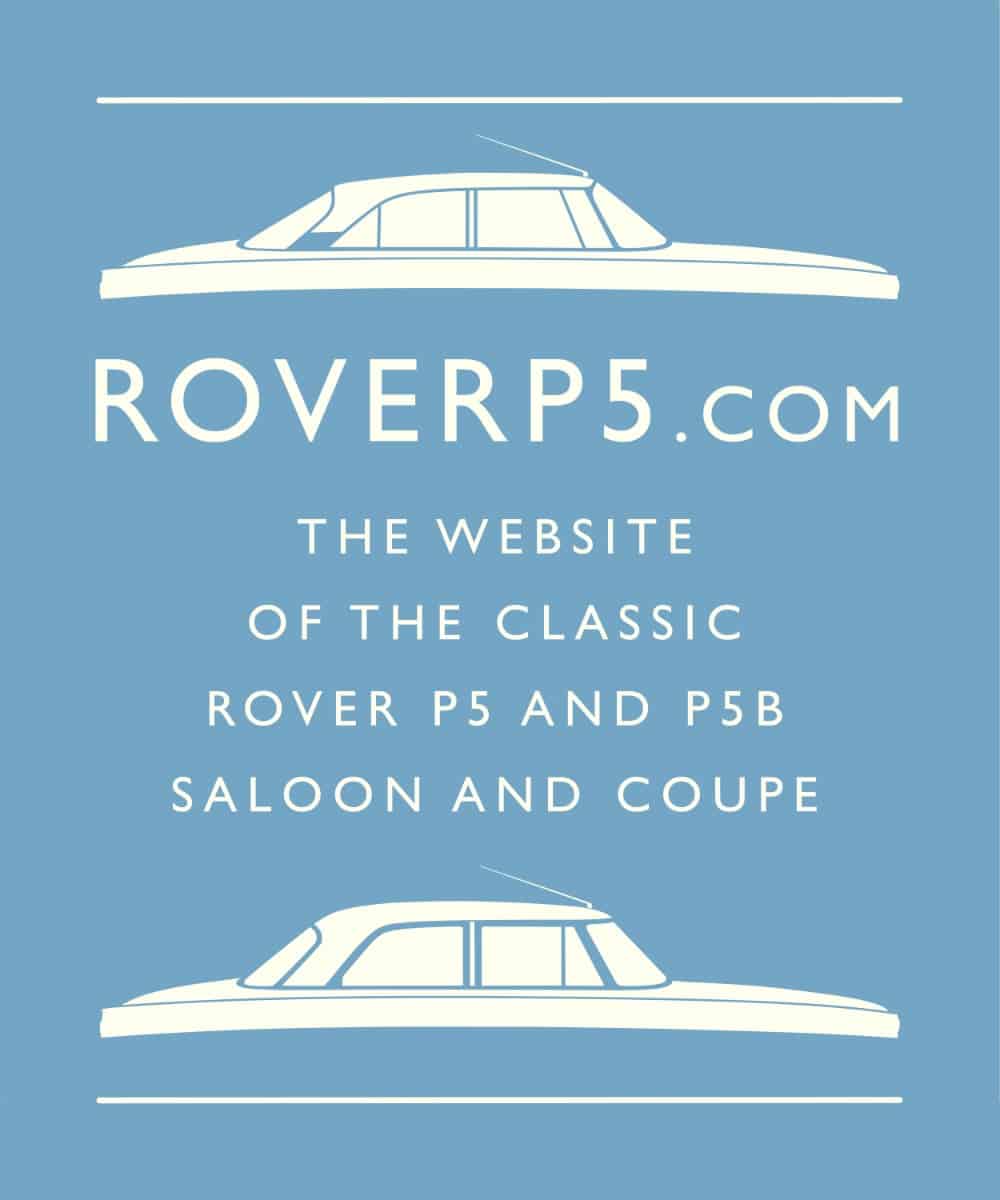Rover P5 (3 Litre) and P5B (3.5 Litre) Service Data
Here’s some useful information that I’ll keep updating over time. Key information that I think is useful will be added here so it doesn’t get buried in the website. If you want me to add something or you spot an error just let me know and I’ll be happy to add it or fix it.
Rover P5 and P5B Service Data
[table id=002 /]
Rover P5 and P5B Service Items
[table id=003 /]
Rover P5 and P5B Service Items (Bulbs)
[table id=004 /]
Rover P5 and P5B Engine Oil
The manual suggests any 20W50 oil, but here’s our article and recommendations on what oil to use in your P5 or P5B – be careful as modern oils have a different formulation to those in the 1950’s to 1970’s even if the name is the same. There’s also a thread on the P5 Club Forum. The main issue is over the amount (or lack of) Zinc in modern oils, and that may be causing wear to classic engines.
Rover P5 and P5B Automatic Transmission & Power Steering
On to another can of worms. The P5 Club Forum has this handy thread. Seems there’s concern over ‘Dexron’ type fluids that were specified by GM, as they contain friction modifiers which help to smooth out the changes on boxes that were designed to be used with it. The P5B Borg-Warner 35 that the P5B uses wasn’t designed to use it, and it can cause slip and gear changing problems. You need an oil that conforms to Type G Ford Spec M2C-33G.
Rover P5 and P5B Wheels & Tyres
Wheels are 5 x 5in PCD pattern (5 x 127mm), 15 inch diameter. They were popularly called Magnum style (as in Magnesium style) but now are better known as Rostyle wheels. The R and O of Rostyle not being from ROver, but from Rubery Owen, the British company that produced them.
See our article on Rover P5 and P5B wheels and tyres here for a full discussion on the options.
A great generic resource on tyres and wheels is The Wheel And Tyre Bible.
[table id=005 /]
Cross Ply tyres recommended to be inflated to 26 psi.
Radial tyres are recommended to be inflated to 30 psi.
Rover P5 and P5B Paint Codes
[table id=006 /]
Vehicle Registration Plate (Number Plate) Years
Data is included for the years the P5 and P5B were in production where there were standardised letter suffixes t hat denote the year of first registration.
[table id=007 /]
UK Number Plate Styles
Black number plates with white or silver characters are permitted on vehicles registered before 1 January 1973. In reality, many cars of the late 1960’s and early 1970’s used white/yellow plates with black lettering as it was seen as being more modern.
The ‘year identifier’ is a handy way to know the age of the vehicle (or at least when it was first registered). Until 1967 the year letter changed on 1 January each year, so car buyers would often wait until the New Year for the new letter to be issued so they could get a “newer” car. This led to major peaks and troughs in sales over the year. To help flatten this out, in 1967 the change of year letter occurred on 1 August rather than 1 January. So “E” suffixes ran only from 1 January to 31 July, before “F” suffixes commenced on 1 August.
In reality all this change did was move the peak from January to August – a marginal improvement. It wouldn’t be until 1999 that the UK moved to a 6-monthly interval between age suffixes, which split the peak into two and seemed to significantly reduce the tendency for buyers to wait for a new suffix date before buying a car.
